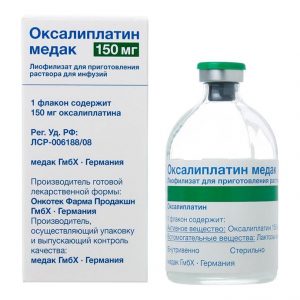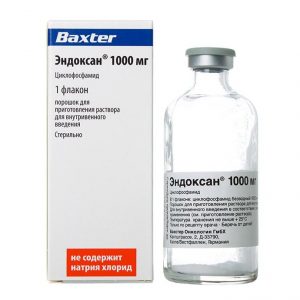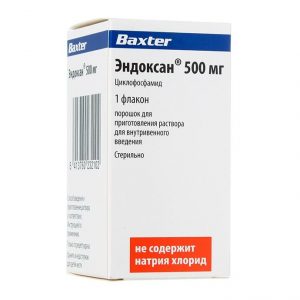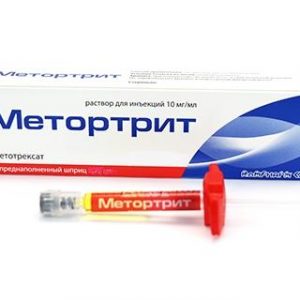Description
Latin name
ERBITUX
Release form
Solution for infusion.
Packaging
In a bottle of 20 ml. In a cardboard box 1 bottle.
Pharmacological action
Pharmacodynamics
Antitumor agent. It is a chimeric monoclonal antibody IgG1 directed against the epidermal growth factor receptor (REFR).
EGFR signaling pathways are involved in controlling cell survival, regulating the cell cycle, angiogenesis, cell migration, and cell invasion / metastasis.
Cetuximab binds to REFR with affinity, which is about 5-10 times higher than that characteristic of endogenous ligands. It blocks the binding of endogenous EGFR ligands, which leads to inhibition of receptor functions. Further, it induces the internalization of EGFR, which can lead to negative regulation of the receptor. Cetuximab also sensitizes cytotoxic immune effector cells against EGF-expressing tumor cells. In in vitro and in vivo studies, cetuximab inhibits proliferation and induces apoptosis of human tumor cells expressing EGFR. In vitro, cetuximab inhibits the production of angiogenic factors in tumor cells and blocks the migration of endothelial cells. In vivo, cetuximab inhibits the production of angiogenic factors in tumor cells and reduces the activity of tumor angiogenesis and metastasis.
Does not bind to other receptors belonging to the HER family.
The proto-oncogen KRAS (Kirsten rat 2 sarcoma viral oncogen homolog) is a top-down central signal transducer for EGFR. In tumors, activation of KRAS EGFR leads to increased proliferation, production of pro-angiogenic factors. The oncogenic mutation of KRAS, leading to its constitutive activity, is one of the most common oncogenic mutations in cancer. As a result of mutations in the active region (codon 12 and 13), the KRAS protein is in the activated state and transmits a signal for proliferation to the nucleus, regardless of the REFR signal.
With metastatic colorectal cancer KRAS, mutation occurs in 30-50% of cases. The appearance of antimeric antibodies in humans (AHAC) is the result of exposure to a class of chimeric antibodies. Current data on the mechanism of AHAC generation is limited. In general, the measured AHAC titers were detected in 3.4% of the studied patients with frequencies from 0% to 9.6% in studies with similar indications. The appearance of AHAC is not correlated with the development of hypersensitivity reactions or any other undesirable effects of cetuximab
Pharmacokinetics
With the introduction of cetuximab at an initial dose of 400 mg / m2, the average Cmax was 185 ± 55 μg / ml. The average Vd was approximately equivalent to the vascular region supplying the affected area (2.9 l / m2 in the range from 1.5 to 6.2 l / m2). The average clearance corresponded to 0.022 l / h / m2.
Css was achieved after 3 weeks of cetuximab monotherapy. The average Cmax was 155.8 μg / ml after 3 weeks and 151.6 μg / ml after 8 weeks, at the same time, the corresponding average value of the reduced concentrations was 41.3 and 55.4 μg / ml, respectively. With the combined use of cetuximab with irinotecan, the average concentration reduction was 50.0 μg / ml after 12 weeks and 49.4 μg / ml after 36 weeks.
Several pathways that can contribute to antibody metabolism are described. All of these pathways include biodegradation of antibodies to smaller molecules, i.e., small peptides or amino acids.
Cetuximab has a continuous T1 / 2 with varying values in the range from 70 to 100 hours at the indicated dose.
Indications
Metastatic colorectal cancer with expression of EGFR and wild type KRAS in combination with standard chemotherapy
monotherapy of metastatic colorectal cancer in case of failure of previous chemotherapy with irinotecan or oxaliplatin, as well as in case of irinotecan
intolerance, locally advanced squamous cell carcinoma of the head and neck in combination with radiation therapy
recurrent or metastatic squamous cell carcinoma of the head and neck in case of failure of previous chemotherapy based on platinum preparations
monotherapy of recurrent or metastatic head and neck metastatic carcinoma chemotherapy based on platinum preparations.
Contraindications
Pregnancy
lactation (breastfeeding)
childhood (efficacy and safety have not been established)
pronounced (3 or 4 degrees) hypersensitivity to cetuximab.
Use during pregnancy and lactation
Use during pregnancy and lactation (breastfeeding) is contraindicated.
During therapy with cetuximab and for 2 months after the last dose, breastfeeding is contraindicated.
Composition
1 ml (1 vial) contains:
Active substances: cetuximab 2 mg (100 mg).
Excipients: sodium dihydrogen phosphate dihydrate, sodium phosphate dihydrate, sodium chloride, water d / i.
Dosage and administration
Intravenously administered as an infusion. Before infusion, premedication with antihistamines and prednisone is necessary.
For all indications, the initial dose is 400 mg / m2 of body surface (first infusion) as a 120-minute infusion and then at a dose of 250 mg / m2 as a 60-minute infusion.
With the development of toxic reactions, the dosage regimen is adjusted according to special schemes.
Side effects
From the nervous system: often – headache.
From the side of the organ of vision: often – conjunctivitis sometimes – blepharitis, keratitis.
From the respiratory system: sometimes – pulmonary embolism.
From the digestive system: often – diarrhea, nausea, vomiting very often – increased activity of liver enzymes (AST, ALT, alkaline phosphatase).
Dermatological reactions: very often – an acne-like rash and / or skin itching, dry skin, peeling, hypertrichosis, changes in the nails (for example, paronychia). In 15%, dermatological reactions are pronounced, in isolated cases, skin necrosis develops. Most skin reactions develop in the first 3 weeks of treatment and usually pass without consequences after discontinuation of the drug (subject to recommendations for adjusting the dosage regimen). Violation of the integrity of the skin in some cases can lead to the development of superinfection, which can cause inflammation of the subcutaneous fat, erysipelas or staphylococcal epidermal necrolysis (Lyell syndrome) or sepsis.
From the side of metabolism: very often – hypomagnesemia very often – hypocalcemia, anorexia with weight loss.
From the blood coagulation system: sometimes – deep vein thrombosis.
Infusion reactions: very often mild or moderate infusion reactions (fever, chills, nausea, vomiting, headache, dizziness, shortness of breath) often – pronounced infusion reactions (usually develop during the first hour of the first infusion or a few hours after the first or subsequent infusions), including airway obstruction (bronchospasm), decreased or increased blood pressure, loss of consciousness, or shock. In rare cases, angina pectoris, myocardial infarction, or cardiac arrest is noted. The main mechanism for the development of these reactions has not been established. Perhaps some of them may be of anaphylactoid / anaphylactic nature.
Other: mucositis, which can lead to nosebleeds.
Drug Interaction
The use of cetuximab in combination with fluorouracil infusion, compared to fluorouracil alone, may cause an increase in the incidence of myocardial ischemia and coronary artery thrombosis (up to infarction).
Storage Conditions
Store at 2-8 ° C. Do not freeze.
Shelf life
3 years.
Deystvuyushtee substance
Cetuximab
Terms and conditions
prescription
dosage form
infusion solution
Possible product names
Erbitux solution for infusion 5 mg / ml vial 20ml
Erbitux solution for infusion 5 mg / ml vial 20 ml
Erbitux vial, 100 mg
Merck KGaA, Russia




